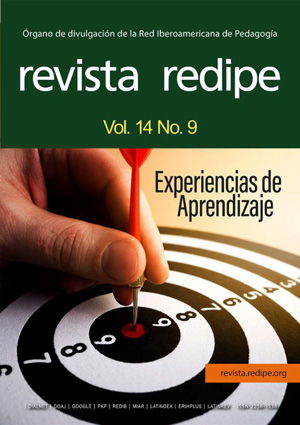Instrument for the analysis of musical works in music education in Latin America
Main Article Content
Keywords
Iaom, Piano, Latin american musical school
Abstract
Pianism in Latin America is a topic a bit studied despite its importance in the training of the cultural identities in the countries that integrate the región, that´s why forming musicians, aware of their history, repertoire and roots, help to strengthen it. In this work the common caractheristics of the pianistic works from latín american composers are identified and analysed in orther to appreciate the posible conformation of a pianistic school. An instrument that serves as a tool for the interpreter is also proposed, as well as a methodology. The conclusions of the project show the importance of its creation as an input for music education, performance and musicology.
References
Aranda, A. (2012). Concierto para piano y orquesta No. 2, Ophiuco: El Signo Secreto, dedi-. partitura inédita.
Audacity. (2024). Obtenido de https://www. audacityteam.org/
Badura-Skoda E., B.-S. P. (2008). Interpreting Mozart The Performance of His Piano Pieces and Other Compositions. New York: Routledge.
Badura-Skoda, P. a. (1993). Interpreting Bach at the keyboard. Oxford University Press.
Camacho, M. (2008). Concierto Tango para piano orquesta, dedicado a María Antonieta Tello. Partitura Inédita.
Cano, R. L. (2002). Entre el giro lingüístico y el guiño hermenéutico: tópicos y competencia en la semiótica musical actual. Ciocioñcp, 9(25).
Cáseres, E. (2001). Música e Identidad. La situación latinoamericana. Revista Musical Chilena, 55(196). Obtenido de http//www.latinoamerica-musica.net/ enseñanza/caceres/identidad.html
Chiantore, L. (2010). Historia de la Técnica Pianística. Un estudio sobre los grandes compositores y el arte de la interpretación en busca de la Ur. Tehcnic. . España: Alianza Editorial.
Chiantore, L. (2010). Una, nessuna o centomila. Apuntes históricos y reflexiones ontológicas en torno al concepto de escuela pianística. Obtenido de Primer Congreso Latinoamericano de Piano, Buenos Aires.
Clarke, P. &. (1991). The Condition of Postmodernity. An Enquiry into the Origins of Cultural Change (an excerpt). Journal of Economic Sociology.
Díaz, M. (19 de enero de 2011). Eje paradigmático y eje sintagmático. Obtenido de Español en américa: https://espanolenamerica. wordpress.com/2011/01/19/ejeparadigmatico-y-eje-sintagmatico/
Emmy Tu, J. M. (2009). Biografía Jorge Federico Osorio. Recuperado el Noviembre de 2011, de https://www. jorgefedericoosorio.com/
Gilbert, A. F. (2003). Introducción al Análisis Schenkeriano. Barcelona, España: Idea Books.
Kramer, J. (2017). The Nature and the Origins of Musical Postmodernismo, en Postmodern. Current Musicology.
Marinis, D. D. (2014). Nuestra Escuela Pianística. De Semillas, Jardines, Flores y Árboles. Mendoza, Argentina: Luz Azcona.
Quintero, C. R. (Octubre de 2006). La Formación Pianística en Bogotá: hacia la Creación de una. (P. U. Javeriana, Ed.) Recuperado el 9 de 2 de 2013, de Cuadernos Musicales. Artes Visuales, Artes Escénicas: http://www.academia. edu/1393952/La.
Tello, M. A. (2012). El diálogo entre presente y pasado en el Concierto para piano y orquesta. UNAM.
Tello, M. A. (2016). El pianismo en México y Latinoamérica: en busca de una identidad propia. México: Universidad La Salle México.
Velázquez, L. (1987). Concierto para piano y orquesta de cuerdas. Partitura inédita.
Vitale, L. (2006). Música Popular e Identidad Latinoamericana. Recuperado el 14 de 01 de 2015, de Centro de Estudio Miguel Enríquez: https://archivochile.com/ Ideas_Autores/vitalel/9lvc/09otros0009. Pdf



